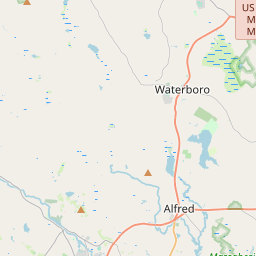Civil War Memorial
Historical marker location:






April 12, 1861: The Civil War begins with the Confederate attack on Fort Sumter, located in South Carolina's Charleston Harbor.
April 15, 1861: President Abraham Lincoln issues a call for 75,000 volunteers to serve in the Union Army to suppress the rebellion.
May 24, 1861: The first major land battle, known as the First Battle of Bull Run (or First Battle of Manassas), takes place in Virginia. It ends in Confederate victory.
September 17, 1862: The Battle of Antietam in Maryland becomes the bloodiest single-day battle in American history, with heavy casualties on both sides. The Union forces, commanded by General George McClellan, manage to halt Confederate General Robert E. Lee's advance into Union territory.
January 1, 1863: President Lincoln issues the Emancipation Proclamation, declaring that all slaves in Confederate-held territories are to be set free. However, the proclamation does not immediately free all slaves in the United States.
July 1-3, 1863: The Battle of Gettysburg in Pennsylvania takes place, resulting in a significant Union victory and inflicting heavy casualties on Confederate forces. It marks a turning point in the war.
November 19, 1863: President Lincoln delivers the Gettysburg Address, emphasizing the principles of liberty, equality, and the preservation of the Union.
April 9, 1865: General Robert E. Lee surrenders to Union General Ulysses S. Grant at Appomattox Court House in Virginia, effectively ending the Civil War.
April 14, 1865: President Lincoln is assassinated by John Wilkes Booth while attending a play at Ford's Theatre in Washington, D.C.
May 10, 1865: Confederate President Jefferson Davis is captured, signaling the collapse of the Confederate government.
December 6, 1865: The Thirteenth Amendment to the United States Constitution is ratified, officially abolishing slavery throughout the country.
While this timeline provides an overview of key events, it is important to note that the Civil War spanned over four years, from 1861 to 1865, and encompassed numerous battles, campaigns, and political developments that shaped the course of American history.
Maine is known for its delicious blueberries: Maine is one of the largest producers of blueberries in the United States and is known for its wild blueberries, which are smaller and sweeter than cultivated blueberries.
The first permanent European settlement in York County was established in 1624 by English settlers who were part of the New England Company. They named the settlement Agamenticus, which later became known as York, after the English city. York quickly became an important trading post due to its proximity to the coast and access to the York River.
Over the years, York County played a significant role in key events of American history. During the American Revolution, the county was a stronghold of patriotism and saw several skirmishes and battles. In 1777, the Battle of Hubbardton, a significant Revolutionary War engagement, took place in present-day Shapleigh.
The county's economy grew alongside its population, with agriculture, lumbering, and fishing becoming major industries. The town of Biddeford became known for its thriving textiles and shipbuilding industries in the 19th century. Today, York County remains an important agricultural and industrial region while also being a popular tourist destination due to its beautiful beaches and historical sites.
Throughout its history, York County has experienced periods of growth, prosperity, and adversity. It has witnessed the transformation of Maine from a colony to a state and has played a role in shaping the nation. With its rich heritage and natural beauty, York County continues to be a place of historical significance and cultural significance in the state of Maine.
York County Timeline
This timeline provides a condensed summary of the historical journey of York County, Maine.
- 1636: York County is founded as one of the four original counties in the Province of Maine.
- 1652: The county becomes part of the Massachusetts Bay Colony.
- 1820: York County becomes part of the new state of Maine when it separates from Massachusetts.
- 1847: The Portland and Rochester Railroad is completed, connecting York County to the rest of Maine and facilitating transportation and trade.
- 1898: The county experiences economic growth with the establishment of various manufacturing and textile mills.
- 1952: The Maine Turnpike, a major highway connecting Maine to Massachusetts, opens and passes through York County.
- 1963: The Biddeford-Saco Bridge is constructed, improving transportation between Biddeford and Saco.
- 1984: The Rachel Carson National Wildlife Refuge is established, protecting valuable coastal habitats.
- 2004: The county experiences a population boom and suburban growth, driven by its proximity to Portland and desirable coastal areas.